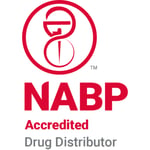In the ever-changing hospital pharmacy environment, regulatory bodies and industry organizations like the Federal Drug Administration (FDA), American Society of Health-System Pharmacists (ASHP), United States Pharmacopeia (USP) and Institute For Safe Medication Practices (ISMP) are making an effort to standardize guidelines for barcoding, unit-dose packaging and expiration dating. Clear standards of practice have shown reduced medication errors resulting in improved patient safety.
Continue reading →Kristen Barrick
Recent Posts
Is Your Pharmacy Compliant With FDA Requirements?
How to Combat Unit-Dose Drug Costs with Third-Party Drug Repackaging
Unit-dose medication packaging has been a standard practice for hospital pharmacies since the late 1960s. Since then, pharmaceutical manufacturers and wholesalers have consolidated, resulting in fewer unit-dose drugs being available to hospital pharmacies. This directly caused price increases on unit-dose products, frequent backorders and more limited options.
Continue reading →Increasing Operational Efficiency and Drug Cost Savings
How Beverly Hospital discovered an annual cost savings opportunity of more than $200,000.
Beverly Hospital, a small community health system with three hospitals and 340 beds, discovered a new strategy for reducing drug purchasing costs and increasing operational efficiency by collaborating with Yankee Alliance, a regional group purchasing organization (GPO), and Safecor Health, an FDA-registered unit-dose repackaging vendor.
Continue reading →FDA Label Changes for Vitamins A, D and E
The U.S. Food and Drug Administration (FDA) now requires that manufacturers change their product labels from international units (IU) to metric units of measurement — micrograms (mcg) or milligrams (mg). This comes as a result of the FDA’s final rule, “Food Labeling: Revision of the Nutrition Supplement Facts Labels,” published on May 27, 2016.
Pharmacies can expect to start seeing these label changes come through on all over-the-counter (OTC) fat-soluble vitamin A, D and E products. We understand that this change can be difficult when trying to determine the metric equivalent for IUs. For a safer transition to metric labeling, Safecor Health will begin including both the IU and metric measurements on its labels, when possible.
The True Cost of In-House Packaging [Infographic]
In-house packaging often seems like a convenient option but it likely comes with a hefty price. We tend to forget about a lot of the underlying expenses -- like equipment and labor. Our infographic below provides a great example of what the true cost of in-house packaging really looks like.
Continue reading →Three Ways to Fill a Robotic Pharmacy System [Infographic]
Robotic pharmacy systems are great for those hospital pharmacies looking to prevent medication errors, reduce pharmacy labor and lower medication inventory. But there’s a downside: Packaging and restocking these robots can be tricky. So how do you fill a pharmacy robotic system without it being too time-consuming?
Check out our infographic for some key consideration points for three ways to fill a robotic pharmacy system:
Continue reading →Ensuring a Quality-Driven Repackaging Process [Infographic]
Patient safety is always the highest priority when repackaging medications. The process of repackaging these drugs into unit-dose can be tedious but it's important to have steps in place to ensure your repackaged product is of the highest quality. The best way to establish medication and patient safety is for your entire repackaging process to be driven by quality assurance. At Safecor Health, we invest in training and education for every employee to ensure our team performs every process according to the highest-quality operating procedures.
Check out our infographic below to learn more about Safecor Health's quality-driven repackaging process.
Continue reading →How to Optimize Pharmacy Staffing through Repackaging
Health care is an ever-changing industry. The fluctuation in technology alone can be hard enough to keep track of, but modern medical institutions also must deal with rapidly increasing costs and ever-shrinking resources. This is especially true of hospital pharmacies where tighter budgets can stretch staff thin and it can be difficult to optimize pharmacy staffing.
Continue reading →Texas Hospital Increases Pediatric Safety
New medication safety guidelines are continuously emerging in the pharmacy world. That's why an 800-bed, tertiary care hospital in Texas decided to better focus attention on the needs of the pediatric patients.
Continue reading →Three Hidden Savings of Outsourced Repackaging
For many hospitals, in-house repackaging often seems like the most cost-effective way to package drugs into unit-dose. Unfortunately, with limited resources, hospital pharmacies don’t always have the time needed to focus on packaging. To offset staff time spent on packaging, many pharmacies purchase whatever is available in commercial unit-dose. Unfortunately, many of those unit-dose purchases have a significant cost premium versus bulk bottles.
Continue reading →


